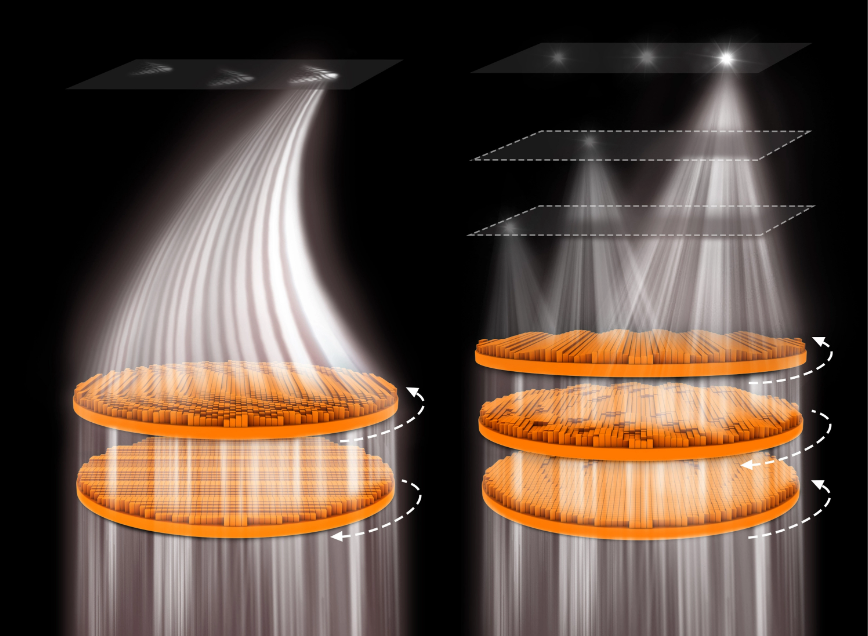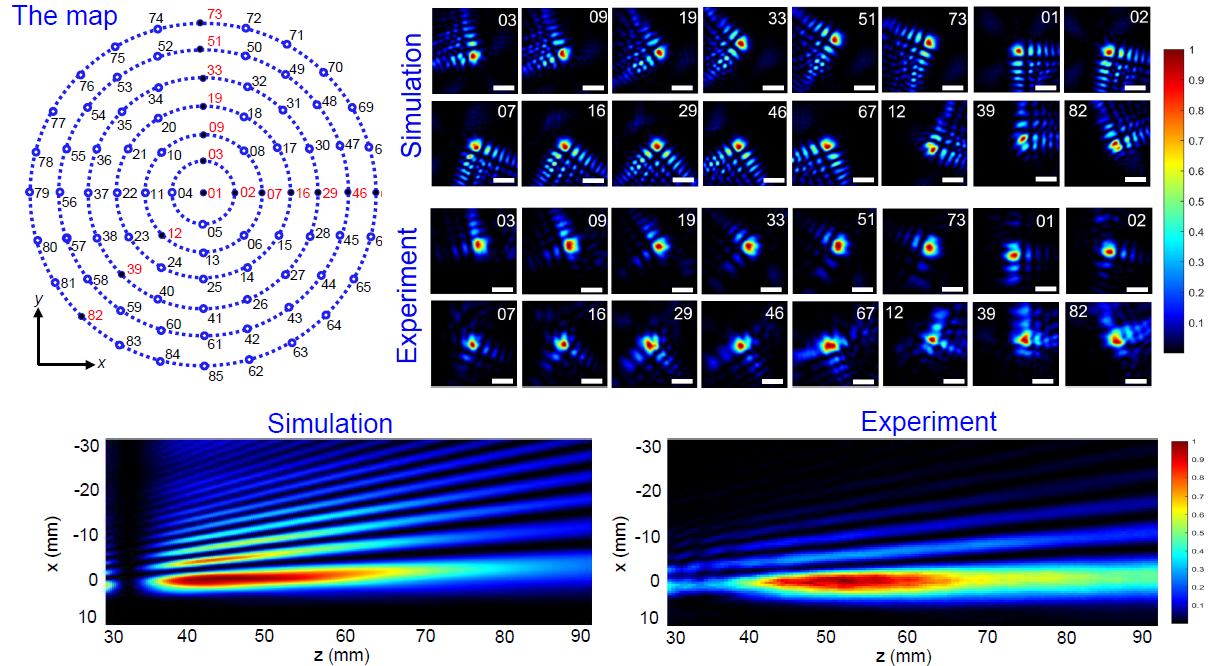CityU scientists develop energy-saving, tunable meta-devices for high-precision, secure 6G communications
The future of wireless communications is set to take a giant leap with the advent of sixth-generation (6G) wireless technology. A research team at City University of Hong Kong (CityU) invented a groundbreaking tunable terahertz (THz) meta-device that can control the radiation direction and coverage area of THz beams. By rotating its metasurface, the device can promptly direct the 6G signal only to a designated recipient, minimizing power leakage and enhancing privacy. It is expected to provide a highly adjustable, directional and secure means for future 6G communications systems.
The potential of THz band technology is unlimited, as it has abundant spectrum resources to support 100 Gbps (gigabit per second)- and even Tbps (terabit per second)-level ultrahigh-speed data rate for wireless communications, which is hundreds to thousands of times faster than the 5G transmission data rate. However, conventional THz systems use bulky, heavy dielectric lenses and reflectors, which can guide waves only to a fixed transmitter or detector, or transmit them to a single receiver located at a fixed position or covering a limited area. This hinders the development of future 6G applications, which require precise positioning and concentrated signal strength.
Existing bulky systems hinder 6G applications
With the joint effort of two research teams at CityU, led by Professor Tsai Din-Ping, Chair Professor in the Department of Electrical Engineering, and Professor Chan Chi-hou, Acting Provost and Director of the State Key Laboratory of Terahertz and Millimeter Waves (SKLTMW), a novel, tunable meta-devices that can fully control the THz beam's propagation direction and coverage area was recently developed to overcome these challenges.
“The advent of a tunable THz meta-device presents exciting prospects for 6G communications systems,” said Professor Tsai, who is an expert in the field of metasurfaces and photonics. “Our meta-device allows for signal delivery to specific users or detectors and has the flexibility to adjust the propagating direction, as needed.”
“Our findings offer a range of benefits for advanced THz communications systems, including security, flexibility, high directivity and signal concentration,” added Professor Chan, who specializes in terahertz technology research.
Rotary metasurface with thousands of micro-antennas

Photo credit: ? Zhang, J. et al. https://www.science.org/doi/10.1126/sciadv.adf8478
The meta-device consists of two or three rotary metasurfaces (artificial, thin-sheet material with sub-wavelength thickness), which work as efficient projectors to steer the focal spot of THz beams on a two-dimensional plane or in a three-dimensional space. With a diameter of 30 mm, each metasurface has about 11,000 micro-antennas, which are just 0.25 mm x 0.25 mm in size and different from each other. “The secret to the success of the meta-device lies in the meticulous calculation and design of each micro-antenna,” said Professor Tsai. By simply rotating the metasurfaces without additional space requirements, the THz beam focus can be adjusted and directed to the specified X, Y and Z coordinates of the destination accordingly.
With the highly precise and advanced equipment in the SKLTMW, the research team conducted experiments and verified that the two kinds of varifocal meta-devices they developed – doublet and triplet meta-devices – can project the focusing spot of the THz wave into an arbitrary spot in a 2D plane and a 3D space, respectively, with high precision.

Photo credit: ? City University of Hong Kong
This innovative design has demonstrated the capability of a meta-device to direct a 6G signal towards a specific location in two- and three-dimensional space.
Since only the user or detector in a specific spot can receive the signal, and the highly concentrated signal can be flexibly switched to other users or detectors without wasting power on nearby receivers or impairing privacy, the meta-device can increase directivity, security and flexibility in future 6G communications with lower energy consumption.
Easy to scale up production at low cost
The metasurfaces are fabricated with high-temperature resin and a 3D printing method developed by the team. They are lightweight and small and can be easily produced in large scale at low cost for practical applications.

Credit: ? City University of Hong Kong
The novel THz tunable meta-device is expected to have great application potential for 6G communications systems, including wireless power transfer, zoom imaging and remote sensing. The research team plans to design further meta-device applications based on THz varifocal imaging.
The findings were published in the scientific journal Science Advances under the title “A 6G meta-device for 3D varifocal”.

Credit: ? City University of Hong Kong
Professor Tsai and Professor Chan are the co-corresponding authors. The co-first authors are Mr Zhang Jingcheng, PhD student under Professor Tsai’s supervision, Dr Wu Gengbo, postdoctoral research fellow in the SKLTMW, and Dr Chen Mu-Ku, Assistant Professor in the Department of Electrical Engineering at CityU. Miss Liu Xiaoyuan, PhD student in the Department of Electrical Engineering, and Dr Chan Ka-fai, from the SKLTMW, also contributed to the research.
The research was supported by the University Grants Committee and the Research Grants Council of HKSAR, the Science, Technology and Innovation Commission of Shenzhen Muncipality, the Department of Science and Technology of Guangdong Province, and CityU.
Related story:
A novel, space-time coding antenna developed at CityU promotes 6G and secure wireless communications